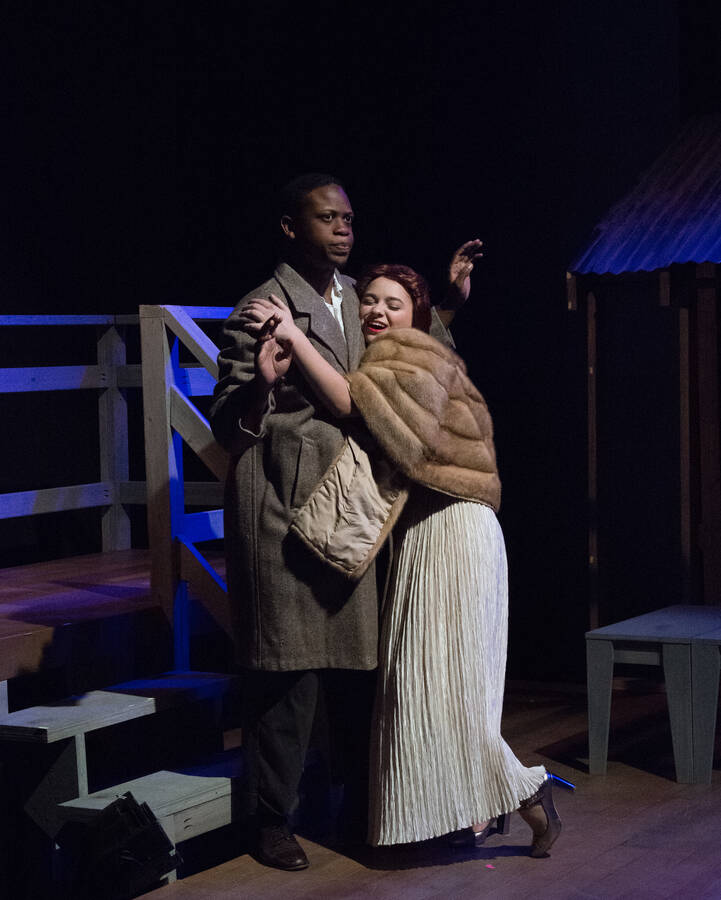When Chicago actor Ben F. Locke called on white theatre professionals to take a “season off” to make room for artists of color, he probably didn’t expect anyone to accept his challenge. He certainly couldn’t have predicted that his Facebook post would inspire change 1,500 miles away in the Arizona desert.
“I thought we were going to be the ninth theatre in town that does this,” said Ron May, founder of Stray Cat Theatre in metro Phoenix, after announcing a 2022-23 season during which—per Locke’s post—“the white leadership team would take one season off, no acting or directing or having their plays in the season, to focus on their job and amplify the support and opportunities for the underutilized BIPOC members” of their artistic community.
This suggestion was originally offered behind closed doors at an unnamed Chicago company, which, in Locke’s account, reacted dismissively.
“I didn’t think anyone was going to do anything about it,” said Alejandra Castro Luna, a Gen-Z actor, director and activist who shared Locke’s post on Facebook, helping it to go, in May’s apt description, “relatively viral.”
“There were lots of local people who commented on it and were like, ‘Yes, this!’” May said.
Luna, who is directing Stray Cat’s season-opening Ghosts of Bogotá (Sept. 30-Oct. 15 at the Tempe Center for the Arts), said she cried when she heard about May’s plans for an all-BIPOC season, which also will include the controversial Slave Play (opening Feb. 24, 2023).
“It wasn’t just me, it was going to be other people, it was going to be the whole season,” said Luna, who previously assistant-directed at Stray Cat as part of a mentorship initiative. “It’s very innovative, it’s very important, and it’s something none of the predominantly white institutions in Arizona have done or considered doing.”

From Broadway to LA, from the Second City to the Valley of the Sun, American theatres—or most of them, at least—are in the midst of an intersectional reckoning on race, gender, and class. In Phoenix, a year of COVID shutdowns and Zoom readings only added to the pressure on companies like Childsplay, a nationally respected Theatre for Young Audiences, and one of only a handful of professional theatre companies in Arizona—all of them nonprofits led by white cisgender men with six-figure salaries.
“The business model is broken. It was always broken,” conceded one of those men, Childsplay artistic director Dwayne Hartford. “You depend on a number of people choosing to live their lives in poverty. We’re essentially asking people to work three jobs to try to make the rent. And for a lot of artists—people of color, young people with families—that’s just not possible.”
Over the past few years, Childsplay has raised pay for both on-staff and contract artists about 10 percent while increasing representation of women and people of color onstage and off, Hartford said.
“When we did Chato’s Kitchen just before the pandemic, we made sure that the white folks in our company were stepping back and making space for Latinx theatre creators to work,” he said.
Just a few years earlier, Childsplay came under fire for adapting the children’s book The Three Little Javelinas as a musical with a nearly all-white creative team and cast. Indeed, all of the top theatres in town have faced public criticism over issues of representation and equity, including Phoenix Theatre Company, the state’s oldest and best-funded stage troupe, and Arizona Theatre Company, the state’s only League of Resident Theatres (LORT) association member.
“You think you’re doing a great job at something, and then you see the bigger picture and realize you’re not doing as great a job as you thought you were,” said Sean Daniels, artistic director at Arizona Theatre Company since 2019.
Like Hartford, Daniels points to areas of progress, from associate artist hires to a recent Jane Austen adaptation cast that looked like Bridgerton. But no, he acknowledged, his company probably won’t be producing an “all-BIPOC” season like Stray Cat’s any time soon.
The question Daniels said he’s asking: “How do we attract new audiences without displacing old ones? It does us no good to jump way ahead of them and not take them with us.”

May acknowledges that asking white artists to step back for a season is easier at a small company like his, with an annual budget under $100,000 and an all-volunteer staff. The only time he or associate artistic director Louis Farber gets paid is when they direct or act in a show, and then only a token stipend that maxes out at $600 per production.
In contrast, professional theatres count on significant savings when they use in-house directors and designers, continue to earn their regular salaries and don’t rack up travel and housing expenses.
“I don’t want to say they have money to burn,” said Farber, May’s longtime right-hand Cat, “but I do think that if they really wanted to take a year and put their money where their mouth is, they could do this, or something like it. They just need to want to do it.”
For on-staff artists, whether paid or volunteer, regular opportunities to practice their craft are more than just a perk of the job. Often they’re the point. They certainly were for May when he started out.
“As a screaming gay dude that kept watching theatre after theatre avoid every gay play that existed, I wanted to start a theatre company” that would produce those gay plays, and “not just The Normal Heart,” he said. “I don’t know that I consciously thought of it as representation. It was like, there are all these plays out there that no one’s doing that would show off all my friends really well, and that I could show myself off really well.”

After establishing Stray Cat Theatre as a leading voice in the local scene, however, May has had more than one “check your privilege” moment.
“Once people started talking about it and saying, ‘Are you aware that you are only programming men?’” he said, “It was like, ‘Consciously, no, but you’re right. Let’s change it.’ And so we did.”
Stray Cat’s initiative was welcomed by local activists, including Chanel Bragg, founder of United Colours of Arizona Theatre, which advocates for BIPOC artists and casting, mostly from behind the scenes.
“I think it’s wonderful, and I think it’s about time,” said Bragg, who was recently hired as associate artistic director at Arizona Theatre Company. “I think other theatres should take notice of that work. Maybe it will give them courage to step out in that way, but also innovate.”
David Hemphill, the longtime producing artistic director of Phoenix’s Black Theatre Troupe, praised Stray Cat’s dedication to representation but also sounded a note of caution.
“Black Theatre Troupe has had difficulty finding experienced African American designers—costume designers, lighting designers, scenic designers, all of those things,” he said. It’s the old “pipeline problem” that arts leaders have been lamenting for years: There aren’t enough experienced artists of color because there aren’t enough opportunities for artists of color to get experience. It’s a vicious circle that cannot be broken by lip service and half measures — or by one small nonprofit theatre.
“In a perfect world, there wouldn’t be a need of a Black Theatre Troupe,” Hemphill said. “But I see there’s going to be a need for quite a while.”
Journalist and cultural critic Kerry Lengel (he/him) is a straight white male Gen-Xer who is aware of the irony when he says he doesn’t identify as any of those things.


